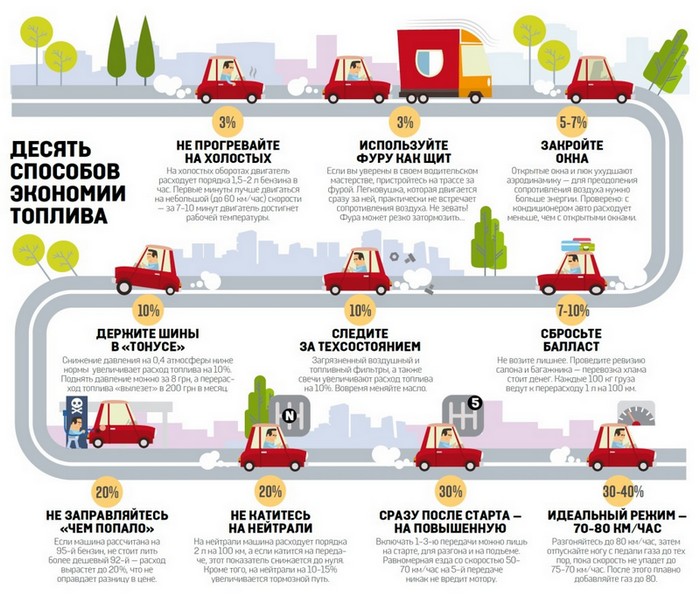
Driving tactics
Driving a car seems to be a simple matter. Steering wheel, gears, gas, brake, forward, reverse. However, if you look at the question of driving more broadly, it may turn out that the technique itself, even at a high level, may not be enough. Equally important is the correct driving tactics.
It's a bit like football or any other sport. Properly chosen tactics can compensate for other shortcomings of athletes, including those related to technique. And just like in sports, when driving a car there is no single, only correct tactic, thanks to which we will achieve our goal.
To put it simply, the correct tactics of driving a car is to plan and predict various traffic situations and prepare appropriate reactions in advance, which will avoid undesirable consequences. As life shows, there can be a lot of unforeseen situations on the road - depending, for example, on the weather, road conditions or traffic jams. Proper driving tactics will certainly help you avoid many of these situations.
Route planning and travel time
An important element of proper driving tactics is proper route planning. This applies rather to long-distance travels and regions where we have never been, or have been for a long time. Even with navigation, we cannot rely solely on our automatic guide. An increasingly long network of expressways offers the choice of a motorway or an expressway, but it's worth checking to see if there's any road work going on on them and if you'll run into other difficulties after exiting them. The main roads have the disadvantage that they are often crowded. If there is such an alternative, you may want to consider a lower class route (eg provincial) which may end up being shorter and more enjoyable.
Departure time is also extremely important. It depends on our preferences whether we prefer to drive during the day, but with a lot of traffic, or at night, when the roads are empty, but visibility is much worse. Do not plan a trip during peak hours (in the case of residents of big cities), because we will lose a lot of time and nerves at the start. If there is a larger city on our way, let's plan the time of passage through it so as to avoid morning or afternoon traffic jams.
If we need to arrive at our destination within a certain hour, add at least 10-20 percent of that time to our estimated travel time. If it will be a journey of many hours, by that time it is also necessary to include time for the necessary breaks and recuperation. According to studies, during the first 6 hours of the journey, fatigue builds up quite slowly (which does not mean that breaks should not be taken at this time), but then it attacks with greater force. Then it's easy to make a mistake.
Early rest is a very important factor for long-distance travel. We definitely need to get enough sleep and avoid heavy physical exertion on the eve of departure. We completely refuse any alcohol or drugs. Even the absence of alcohol in the blood does not mean that we do not feel the so-called. alcohol fatigue.
Providing free space around the car
One of the most important rules for safe and comfortable driving is maintaining a sufficient distance from other vehicles on the road. Importantly, this applies not only to the space in front of our car, but also behind and on the side. Why is it so important? Well, in an emergency, we simply have nowhere to run to avoid a collision.
The distance to the car in front should be determined according to the 2-3 second rule. This means that we will reach the place where the vehicle is currently in front of us in the specified 2-3 seconds. This is a safe time to effectively slow down or change lanes in the event of a difficult situation. We extend this distance in adverse weather conditions. There is no need to convince anyone that in snow or rain the distance between cars should be much greater than on a dry surface.
It is also worth taking care of a comfortable distance behind us. In the event of sudden braking, the driver of the rear vehicle has very little time to react, which can lead to a collision with the back of our vehicle and whiplash injuries that are characteristic of such collisions. If a vehicle is moving too close behind us, try to back it off or increase the distance to the vehicle in front so we don't have to brake hard. We can always brake clearly and thus persuade such a driver to overtake us.
This is ideal for our safety when there are no other vehicles on either side of our car. However, this may not be feasible, so let's try to leave some free space on at least one side. Thanks to this, we can save ourselves by running into the adjacent lane when we notice cars slowing in front of us too late, or when a vehicle moving next to us begins to unexpectedly turn into our lane.
Stop at a traffic light or in a traffic jam
Traffic in traffic makes most drivers nervous. However, this does not mean that we can lose our heads at such a moment. Theoretically, since such driving usually occurs at speeds of several km/h, we can afford to close the distance to the car in front. Be aware, however, that it is very common for collisions to occur at such low speeds when adjacent vehicles collide with each other. The remedy is to increase the distance in front of us and observe (as well as listen) what is happening behind us. If we notice a dangerous situation, we have time and, above all, a place to escape. However, if we are hit, there is a chance that we will not run into the trunk of the car in front of us.
We must do the same while standing at a traffic light. A little more distance will also allow us to take off more smoothly (we have better visibility of the road) and avoid a stationary car if it suddenly refuses to obey.
If we are turning left and waiting for our turn, overtaking cars in the opposite direction, do not turn the wheels. In the event of a collision from behind, we will be pushed under the wheels of vehicles in the opposite direction. In such a situation, the wheels should be positioned straight and turn them only when starting off.
Planning maneuvers and forecasting traffic situations
This is perhaps the most important point to remember when driving. While driving, we look at the environment not only in front of us and behind us, but also look much further. Because of this, we can see changing lights, vehicles starting to brake, joining traffic or changing lanes. Thanks to this, we can react earlier, avoiding sudden braking.
An extremely important rule of the road is the principle of limited trust. Let's apply it not only to other drivers, but to all road users - pedestrians, especially children or drunkards, cyclists and motorcyclists.
couple driving
A great way to drive in difficult weather conditions - night, rain, fog - is to drive two cars that keep an appropriate distance between them. Observing the car in front of us allows us to guess what awaits us in a moment - the need to slow down, slow down harder, or, for example, cornering. During such a trip, do not forget to change the order. The driver of the car in front will get tired much faster. If we went on a trip alone, then let's try to "invite" another car to such a partner drive. The benefit will be mutual.
